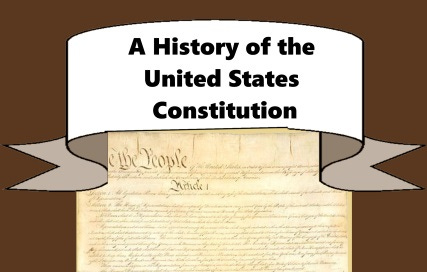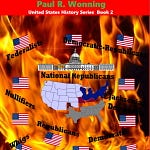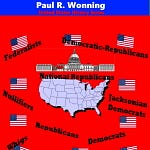Transcript:
Greetings, today I will talk about one of the earliest plans to unite the 13 colonies under one government, the Albany Plan of Union, which Benjamin Franklin proposed in July 1754. At this time, war was brewing between Britain and France. This war would become known as the 7 Years War in Europe and the French and Indian War in the United States. A few months earlier, in May 1754 a young colonel in the Virginia militia named George Washington, had created an incident at the Battle of Jimonville Glen that had precipitated this war. That story will be fodder for a future podcast and is covered in my book, Colonial American History Stories - 1753 – 1763, which is available on my web site.
Today, the focus is on an event spawned by Washington's military adventure, the Albany Congress. It was here that the first formal plan for a united colonies first appeared.
Colonial leaders also intended to discuss other issues regarding mutual defense. The French still controlled Canada and the Spanish threatened from the south. There was always the threat from the various Indian tribes. During this time, the French were stirring up the native tribes in the Ohio Valley. They encouraged them to attack the British settlements in Virginia and Pennsylvania. The colonies that bordered Canada suffered frequent incursions from French-allied northern tribes as well. Many colonial leaders were concluding that a plan for united defense from all colonies would benefit all.
The Congress was originally encouraged by the King and Parliament to propose a treaty to deal with the Iroquois tribes.
When Benjamin Franklin learned that colonial leaders planned a Congress in Albany, New York in 1754 to plan united action on several issues he printed the cartoon "Join or Die," in his newspaper. The cartoon appeared in The Pennsylvania Gazette and featured a dead snake cut into thirteen pieces, the implication being that the colonies, like a snake cut into pieces, would perish if they remained disunited.
The colonial assemblies in Maryland, Pennsylvania, New York, Connecticut, Rhode Island, Massachusetts and New Hampshire all sent representatives to this Congress. Pennsylvania chose Benjamin Franklin to represent the colony.
The idea of a united colonial government had occurred to many colonial leaders at the time, Franklin among them. Many had published articles outlining proposals for these plans. Franklin was one of these men and during his trip from Philadelphia to Albany he penned letters to several of the New York delegates with proposals. During this trip he wrote a draft version of his plan.
The Congress held its first session on June 19, 1754. The delegates held a vote on June 24 to consider union and the result was a unanimous consensus to formulate a plan for union. The committee charged with writing it submitted a draft version on June 28. From that date until July 10, the Congress debated and revised the plan. On July 10, 1754 the delegates voted to adopt the plan and sent it out to the colonial assemblies for consideration. They also sent a copy to the king and to Parliament.
The first paragraph of the plan begins:
"It is proposed that humble application be made for an act of Parliament of Great Britain, by virtue of which one general government may be formed in America, including all the said colonies, within and under which government each colony may retain its present constitution, except in the particulars wherein a change may be directed by the said act, as hereafter follows.
That the said general government be administered by a President-General, to be appointed and supported by the crown; and a Grand Council, to be chosen by the representatives of the people of the several Colonies met in their respective assemblies."
The plan contained 25 articles, all of which may be found in my book, A History of the United States Constitution, which is available on my web site.
Parliamentary leaders and the King studied the plan and decided not to push the plan in the colonies. They had initially encouraged a union of some sort but upon considering the plan they feared that they were creating a political entity that they could not control. The various assemblies considered the plan and all rejected it. They feared losing some of their power and taxing authority to a centralized government. The colonies were not quite ready for a unified government.
The book is part of my United State History Series. The other two books in the series are A Short History of United States Politics Book 2 and Political Parties and the A Short History of United States Politics Book. The books are available in ebook, softbound and audio book format on Amazon, Barnes and Noble, Apple and many other online book retailers.
You can find it on my web site, .
Residents of southeast Indiana can find my books in Batesville at the Walnut Street Variety Shop on George Street.
My substack page, History, Gardening and stuff also includes many articles on history, gardening and other topics that strike my fancy. There is a link on my web site to the newsletter.
I hope you enjoyed this podcast and thank you for listening.














Share this post